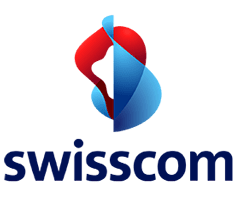
“It usually takes about 36 months to bring a new TV platform to market but we had a minimally viable product in 8-10 months and brought the full product to market in 18 months. SAFe helped our relatively small team build and run a world-class product and guided us when in doubt, showing us the way toward Agile product development flow.”
—Simon Berg, Agile Program Manager, Swisscom Entertainment Projects
Challenge:
Swisscom had to move quickly to bring a new IPTV product to market since a competitor had already begun a similar effort.
Industry:
Telecommunications
Solution:
- SAFe®
- Rally® Unlimited Edition (now CA Agile Central)
Results:
- Swisscom brought TV 2.0 to market in about half the time of comparable projects, ahead of the competition.
- The company decreased the time from code-ready to mass rollout from 9-12 months to no longer than six weeks.
- The product won a coveted industry award for “Best multi-screen experience.”
- Last year, IPTV signups grew by nearly 14 percent.
- PI Planning recommendation score from participants: 8.3/10
Best Practices:
- Test Automation—Swisscom reduced end-to-end test team size from dozens to just three, while maintaining quality – and deployed those individuals to other value-producing functions.
- Program Increment Planning—Planning with SAFe led to new alignment and momentum.
- Most Valuable Feature First—WSJF Abstract (Weighted Shortest Job First) helped prioritize features and quantify the cost of delay.
Introduction
Across the globe, consumers are increasingly choosing IPTV over cable. In Switzerland, more than 1.37 million customers now subscribe to Swisscom’s cloud-based service, Swisscom TV 2.0.

While the growth of Swisscom TV 2.0 is a success story in itself, so too is the company’s journey to bring the product to market in a highly competitive industry where speed can make the difference between success and failure.
Thanks to Agile development practices with SAFe and a new level of collaboration between business and IT, the Engineering group at Swisscom Entertainment achieved the feat in half the time of typical projects, with a small but nimble team that helps proper agility transformation.
“It usually takes about 36 months to bring a new TV platform to market but we had a minimally viable product in 8-10 months and brought the full product to market in 18 months,” says Simon Berg, Agile Program Manager, Swisscom Entertainment Projects. “SAFe helped our relatively small team build and run a world-class product and guided us when in doubt, showing us the way toward Agile product development flow.”
SAFe: The Blueprint Swisscom Sought
In 2012, Swisscom initiated plans to bring a new IPTV offering to the market, to go beyond the basic product currently available.
This time, Swisscom wanted to add features that newly available technology would make possible. Adding urgency, the company’s largest competitor had reportedly already begun work on a similar product.
At the time, Swisscom ran what Berg describes as a PMI-style, waterfall, multi-project environment that was transitioning into a home-grown, scaled Scrum approach. A year prior, Swisscom had taken steps to realize a product house model by moving “business” and “IT development” groups into one organization.
Now, the Engineering group sought to scale Agile in earnest, leading it to the Scaled Agile Framework (SAFe).
“Many things we tried to come up with on our own were already defined in a structured manner in SAFe,” Berg says. “It clicked with us, and we began transitioning to SAFe almost immediately after discovering it. With SAFe, we were able to take incremental transformation steps, profiting from the vast body of knowledge it represents.”
Finally: Big-Room Success
The team had already implemented three-month program increments with teams structured along program lines. However, they had not yet tried cross-functional, big-room planning meetings.
After diving into SAFe, the Engineering group held its first Program Increment (PI) planning session with approximately 70 people across multiple functions, including product owners, IT operations, business operations, product management and experience development.
“I was pleased to see which people were talking to each other, people who had not talked before,” Berg says. “Business owners and IT ops engineers talked about what they do and their priorities. They were giving each other their part of the vision and could finally align and work together.”
“We came out of the first PI planning session with a decent plan that lasted for the PI, except for one other small planning session,” Berg adds.
Today, PI planning has become standard practice. Noted one product manager after the group’s ninth PI planning meeting: “It’s challenging, but I don’t want to work differently ever again.”
More Flexible in a Fast-Changing Market
In total, about 120 people ultimately worked on Swisscom TV 2.0, in more than 10 teams of teams, spanning from pure software development to video streaming, building up the data center capabilities and working to design the TV set-top box and remote control hardware. When you count non-Agile suppliers, the project included approximately 20 teams.
SAFe’s focus on alignment and shared vision kept diverse stakeholders in sync, accelerating progress and enhancing quality. “The focus on showing your work and releasing often for feedback helped us build a better product,” Berg says.
Likewise, SAFe provided flexibility when it mattered most. Mid-project, Swisscom decided to improve the product by removing time limits on the storage of recordings—a major product enhancement.

Berg also stresses the value of the WSJF concept (Weighted Shortest Job First) in helping prioritize features. “Quantifying the cost of delay was perhaps the most impactful learning of SAFe,” Berg says. “It was the first formula that really helped us have the right discussion about our priorities and what to build, aligned around the benefits to the customer.”
Such agility in business also helped the company become one of the first IPTV providers globally to launch Ultra HD Video on Demand, as well as Ultra HD live TV in early 2016.
Code Ready in Six Weeks
On the Swisscom TV 2.0 release, the company decreased the time from code-ready to mass rollout from 9-12 months to no longer than six weeks. “We don’t know of a comparable case in the industry,” Berg says.
Swisscom also did it more efficiently. Where test team size was once dozens of people, now with test automation, testing requires just three people while still maintaining product quality. Those testers now focus on other value-generating functions, ensuring that quality gets built into the process.
Beyond internal success, the industry took notice as well. The product went on to win a coveted award for “Best multi-screen experience”—an honor not usually bestowed on telecommunications companies.
Perhaps the greatest rewards: strong customer satisfaction scores and product sales. Last year, IPTV signups grew by nearly 14 percent.
Next Steps
Swisscom now deepens its SAFe adoption, with newly set priorities for elaborating on the economic framework concept and the solution intent concept, along with improving DevOps. Other Swisscom product units have also taken interest in adopting SAFe.
“For Swisscom TV, this has become a new way of doing business,” Berg says. “Others are looking into how we work because they see it drives us forward.”
Share:
Back to: All Case Studies
Suggested Case Study: Amdocs